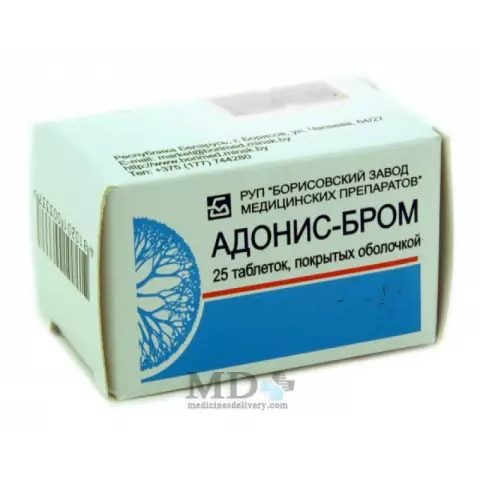- Author Rachel Wainwright [email protected].
- Public 2023-12-15 07:39.
- Last modified 2025-11-02 20:14.
Streptocide
Instructions for use:
- 1. Composition and form of release
- 2. Analogs
- 3. Pharmacological action
- 4. Indications for use
- 5. Method of application
- 6. Contraindications
- 7. Side effects
- 8. Overdose
- 9. Drug interactions
- 10. Storage conditions
Prices in online pharmacies:
from 19 rubles.
Buy

Streptocid is an antimicrobial drug belonging to the group of chemotherapeutic drugs with bacteriostatic action against streptococci, gonococci, meningococci, Escherichia coli, pneumococci and other bacteria.
Composition and form of release
The drug is produced in the following dosage forms:
- White tablets containing 300 and 500 mg of streptocide, in packs of ten;
- Streptocidal ointment 5% and 10% on a petroleum jelly base, in tubes of 25, 30 or 50 g;
- Suspension 5% containing streptocide 5 g, thymol 0.5 g, distilled water 69.75 g, and emulsifier 20 g;
- Liniment 5%, which contains streptocide 5 g, animal fat 3.1 g, lime water 57.9 g, fish oil 34 g, in cans of 25 or 30 g.
Streptocide analogs
Structural analogues of Streptocide in terms of the active ingredient: Streptonitol, Osarcid, Sulfanilamide.
In addition, the following Streptocide preparations are produced:
- Streptocide is soluble in the form of a white powder. This analogue of Streptocide, due to its good solubility in water, can be used not only internally, but also intramuscularly, subcutaneously and intravenously;
- Sunoref ointment, which contains streptocide, eucalyptus oil, sulfadimezin, camphor, ephedrine hydrochloride, norsulfazole. The ointment is used topically to treat chronic and acute rhinitis.
pharmachologic effect
According to the instructions, Streptocide has a bacteriostatic effect. In terms of its effectiveness, the drug is largely inferior to modern antibiotics. Currently, many strains of microorganisms, in particular hospital ones, are resistant to streptocide treatment.
The drug acts on gram-negative and gram-positive cocci, chlamydia, gram-negative sticks, nocardia, protozoa. In an alkaline environment, the activity of streptocide increases.
Anaerobes, Pseudomonas aeruginosa, enterococci are immune to streptocide treatment.
When Streptocide is used internally, it is rapidly absorbed, after 1-2 hours its maximum concentration in the blood plasma is observed.
With the advent of more active and much easier tolerated sulfa drugs and antibiotics, the value of the drug as a drug for the treatment of bacterial infections has significantly decreased.
Indications for use of Streptocide
According to the instructions, Streptocide is shown:
- with chronic and acute gonorrhea;
- with wound infections;
- with colitis;
- with epidemic cerebrospinal meningitis;
- with angina and various coccal infections;
- with pyelitis;
- with colibacillary cystitis.
Treatment with streptocid is especially effective in infections caused by beta-hemolytic streptococcus (puerperal sepsis, erysipelas of the skin, streptococcal pneumonia, etc.).
Method of using Streptocide

According to the instructions, Streptocid is prescribed orally for bacillary and coccal diseases. As a rule, the dosage for adults is 0.5-1 g per dose, four to six times a day, but no more than seven times.
In case of wound infections with a purulent complication, for the treatment of infected burns, administration of a powder, liniment or Streptocide ointment is prescribed to the wound.
Maximum dosage of the drug for adults:
- 2 g - one-time;
- 7 g - daily.
Contraindications
The use of Streptocide is contraindicated in:
- severe hepatic or renal impairment;
- anemia;
- porphyria;
- azotemia;
- congenital lack of glucose-6-phosphate dehydrogenase;
- pregnancy and breastfeeding;
- hypersensitivity to the components of the drug.
Streptocide treatment is contraindicated in newborn babies, as it causes kernicterus.
The drug in the form of tablets is contraindicated in children under three years of age.
Side effects of Streptocide
The instructions for Streptocide indicate the following side effects:
- Hematopoietic system: thrombocytopenia, hemolytic anemia.
- Allergic reactions: urticaria, anaphylactic shock, pruritus, Stevens-Johnson syndrome, Lyell's syndrome.
- Urinary system: crystalluria with acidic urine.
- Gastrointestinal tract: transient changes in the activity of liver enzymes, vomiting, nausea.
Overdose
Overdose symptoms are as follows: headache, vomiting, nausea, cyanosis, dizziness.
In case of overdose, symptomatic therapy is necessary.
Drug interactions Streptocide
When treating with a drug or an analogue of Streptocide, it must be borne in mind that novocaine and other drugs with a similar chemical structure, containing a para-aminobenzoic acid residue, may exhibit an antisulfanilamide effect.
Storage conditions
The drug is stored in a dry, dark place. The shelf life of Streptocid tablets is ten years, ointments - four years, liniment - one and a half years.
Streptocide: prices in online pharmacies
|
Drug name Price Pharmacy |
|
Streptocide powder for external use 2 g 1 pc. 19 RUB Buy |
|
Streptocide powder for external use 2 g 1 pc. RUB 20 Buy |
|
Streptocide powder for external use 2 g 1 pc. RUB 23 Buy |
|
Streptocide powder for external use 2 g 1 pc. RUB 25 Buy |
|
Streptocide pore. for outside. approx. 2 g RUB 27 Buy |
|
Streptocide powder for external use 2 g 1 pc. RUB 27 Buy |
|
Streptocide powder for external use 2 g 1 pc. RUB 29 Buy |
|
Streptocid powder for outside approx. 2g RUB 31 Buy |
|
Streptocid powder for outside approx. 2g Lumi 34 rbl. Buy |
|
Streptocide powder for external use 2 g 1 pc. RUB 40 Buy |
|
Streptocid powder for external use 5 g 1 pc. RUB 44 Buy |
|
Streptocid 10% ointment for external use 25 g 1 pc. RUB 49 Buy |
|
Streptocid 10% ointment for local and external use 25 g 1 pc. RUB 54 Buy |
|
Soluble streptocide 5% liniment 30 g 1 pc. 74 RUB Buy |
|
Streptocid powder for external use 10 g 1 pc. 82 RUB Buy |
|
Soluble streptocid liniment 5% 30g 84 rbl. Buy |
| See all offers from pharmacies |
Information about the drug is generalized, provided for informational purposes only and does not replace the official instructions. Self-medication is hazardous to health!






